
Everybody's a Director (And an Artist)
Solange Oliveira Farkas
on Video Art
[ Daniil Beltsov ] Do you remember your first encounter with video art? What did you feel then?
[ Solange Farkas ] It happened in 1989 at the Magiciens de la Terre exhibition in Paris, where I saw works by South Korean artist Nam June Paik. I was struck by the innovative use of video technology, and especially by the robot sculptures—a beautiful example of incorporating the dynamic nature of video into visual art. Nam June Paik’s works not only went beyond my established notions of creativity but also demonstrated the power of video as a means of artistic expression. This experience showed me how technology could interact with culture and significantly influenced my further perception of contemporary art practices.
Solange Farkas is the founder of Associação Cultural Videobrasil. She has been the artistic director of the Festival since its first edition (1983). She was director and chief curator of the Museu de Arte Moderna da Bahia (Brazil), guest curator in important international events—such as FUSO (Portugal), Sharjah Biennial (United Arab Emirates), Dak’Art – Contemporary African Art Biennale (Senegal) and Jakarta International Video Festival (Indonesia), among others—and curated many exhibitions. Farkas is a member of the International Biennial Association Board, and in 2017 she was honoured with the Montblanc Arts Patronage Award.
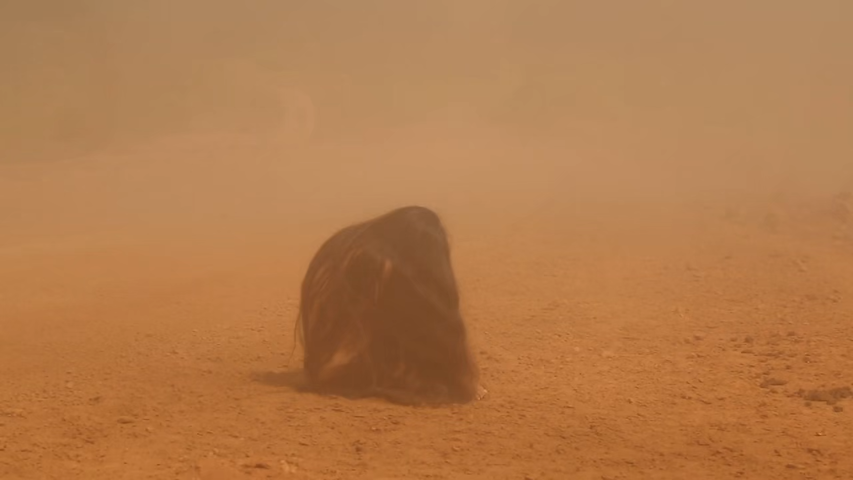
Luciana Magno. Trans Amazônica, 2013
Videobrasil Historical Collection
[ D.B. ] Why did video interest you as a medium in the 1980s?
[ S.F. ] Having just graduated from the journalism faculty, I became interested in experiments in audiovisual arts. At that time, the first video cameras were making their way to Brazil, and I decided to take the opportunity to explore this new medium. It became clear to me that video could serve not only as a tool for artistic self-expression but also as a way to attract and inspire young artists like myself.
[ D.B. ] And around that same time, did collaboration with individual artists grow into the international Videobrasil festival?
[ S.F. ] Yes, I began collaborating with everyone who was interested in video’s potential as a medium. Our joint works weren’t just individual projects; they gave us the opportunity to exchange ideas and experiment collectively. As we worked, our networks expanded, allowing us to communicate with other innovative artists both in Brazil and abroad.
As you noted, over time these connections and exchanges naturally evolved into the international Videobrasil festival. It became a true celebration of video art, a place where artists could gather and show their work. It was amazing to see how our initial interests and collaboration grew into something bigger—a community striving to expand the boundaries of video art.
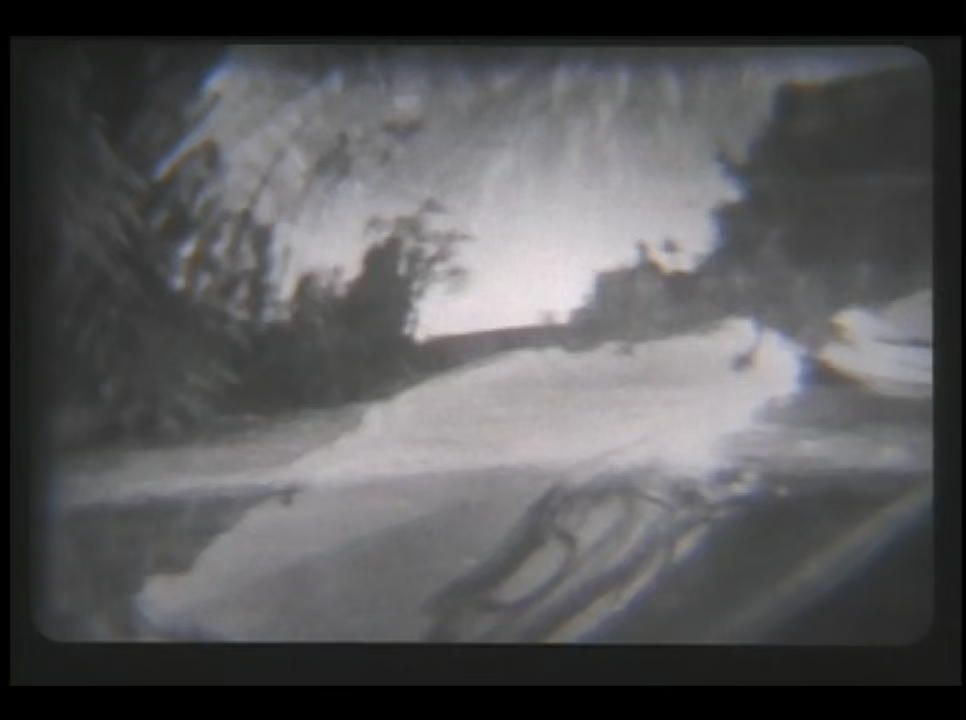
Cao Guimarães, Rivane Neuenschwander. Inventário das pequenas mortes (sopro) (still), 2000
Videobrasil Historical Collection
[ D.B. ] Today, the video essay genre is perhaps the most important in terms of information transmission. Not to mention that our phones store numerous videos as “documents” of our lives, forming a palette of memories. In other words, video is everywhere. In this case, is it difficult for you to distinguish video as an art form from video as a tool for recording life events, a everyday means of human communication?
[ S.F. ] I admit that at first, it was very difficult for me to draw this line. This largely happened because I viewed the medium from traditional positions, using categories of narrativity and functionality. However, over time, my perspective changed, and I managed to arrive at a more nuanced understanding of the video phenomenon. By communicating with artists and familiarising myself with their works, I learned to see the creative potential in everyday video recordings, to understand how the same medium can take the form of completely different statements depending on the author’s intentions, context, or chosen manner of execution.
As it turned out, the boundaries between art and documentation of personal life proved to be quite fluid. Each video tells its own story, regardless of whether it was created as an artwork or not. In short, I’ve embraced video in all its forms and pay attention to both the artistic and everyday potential of the medium.
[ D.B. ] In that case, could you briefly explain what can be considered video art and what cannot?
[ S.F. ] In my view, video art is a contemporary art movement that uses video technology capabilities as its primary means of expression. Video art includes certain installations, performance documentation, and experimental works at the intersection of genres.
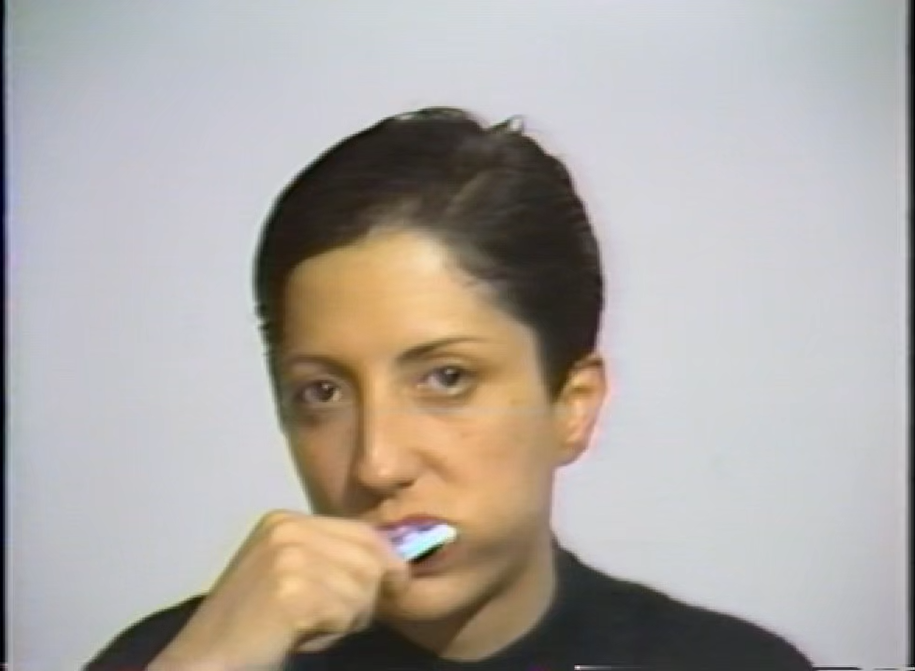
Lenora de Barros, Walter Silveira. Homenagem a George Segal, 1985
Videobrasil Historical Collection
Unlike conventional films, video art works prioritise the conceptual aspects and artistic intentions, rather than story or commercial considerations.
On the other hand, not all video recordings qualify as video art. For instance, news broadcasts, or promotional content typically serve specific functional purposes—information dissemination, or entertainment—rather than artistic exploration. While these forms may incorporate artistic elements, they do not focus primarily on challenging conventions or provoking thought in the same way that video art does. Ultimately, the distinction lies in the intent behind the creation and the context in which the work is presented.
[ D.B. ] The question about the viewer seems inevitable when we talk about art! How did Videobrasil’s audience develop?
[ S.F. ] Initially, our audience consisted mainly of young and curious people, eager for anything new. They were interested in exploring video as a new, experimental medium and its special language. Over time, Videobrasil’s audience changed. Today it’s much broader and includes people with completely different interests: young artists, students, established masters, and collectors. Such diversity proves that video art has become a full-fledged and significant form of self-expression. We actively work on attracting a broad audience, and inclusive programmes, workshops, and educational initiatives help with this. Our goal is to create an environment where everyone feels welcome and ready to explore video and its place in contemporary art.
[ D.B. ] Recently in Los Angeles, a terrible natural disaster occurred—fires destroyed many homes, and along with them, invaluable archives were burned to ashes. In your view, how should artwork storage be organised today: on physical media in museums and galleries, or is it more reliable to use internet archives?
[ S.F. ] In my opinion, both websites and museums serve important but different functions. Online archiving provides greater accessibility and reaches a global audience. Digital space is dynamically updated, reflecting the smallest nuances in the evolution of art and culture, acting as an extensive repository of memory. A museum, however, implies physical presence, and this establishes stronger connections between people, art, and history, enriching the viewer’s understanding.
[ D.B. ] In that case, both are equally important.
[ S.F. ] Yes, of course. Given recent events, such as the catastrophic fire in Los Angeles, a hybrid approach to archiving is becoming increasingly important. By combining the capabilities of web archives and museums, we can develop a sustainable and comprehensive strategy for preserving artworks. This ensures that art and memory will not only be securely protected but that people will constantly engage with them.
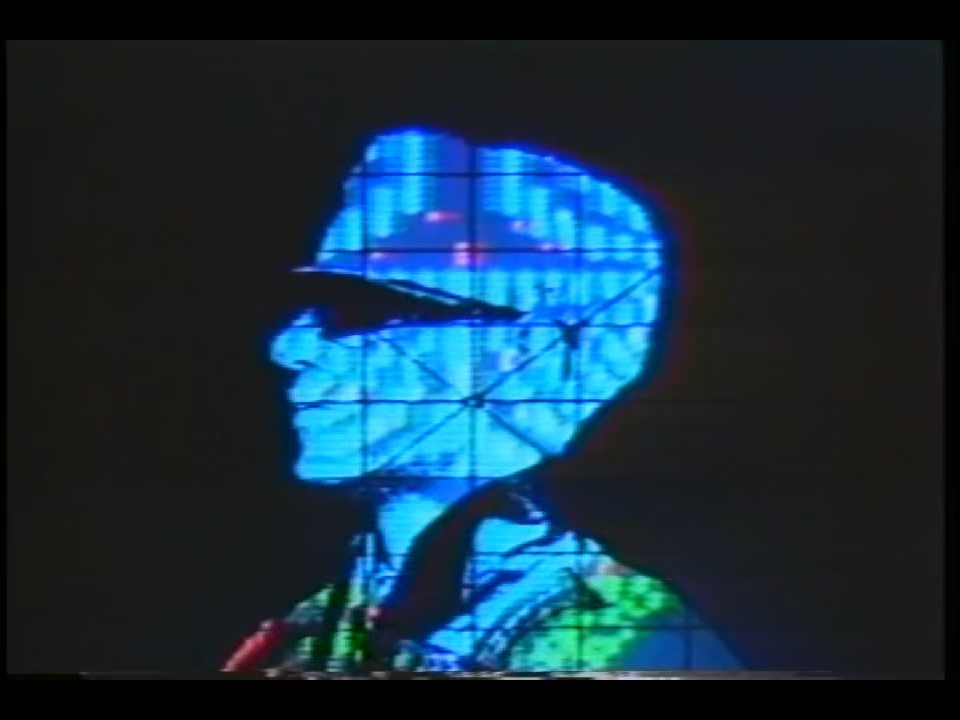
Eletroagentes and Alfredo Nagib. Eletricidade (still), 1984
Videobrasil Historical Collection
[ D.B. ] In the 1980s, when video art was just emerging, it was rather the domain of artists who didn’t have access to television broadcasts and other popular platforms. Now there are social networks where anyone can publish videos—how does this affect the language and method of video art?
[ S.F. ] Obviously, the emergence of social networks and platforms like YouTube has radically changed the landscape of video content consumption. While in the 1980s, video art was indeed mainly a marginal, underground movement, today the democratisation of video production and distribution allows virtually anyone, to share their work with a global audience. This shift has led to a diversification of voices and styles in the medium. However, accessibility brings new challenges.
The influence of algorithms and corporate censorship means that visibility is no longer solely determined by the quality or uniqueness of the content but rather by what fits certain market or political agendas.
As a result, the language and methods of video work have adapted to engage with these platforms and their audiences. Artists now often incorporate elements that resonate with viral trends or format requirements, exploring the interplay between art and commercialism.
This evolution prompts a reevaluation of what constitutes video art. While social media can dilute traditional artistic values, it also offers new opportunities for creative experimentation. Artists are increasingly engaging with interactive formats, live streaming, and real-time feedback from viewers, which can lead to more participatory and community-driven approaches in their work.
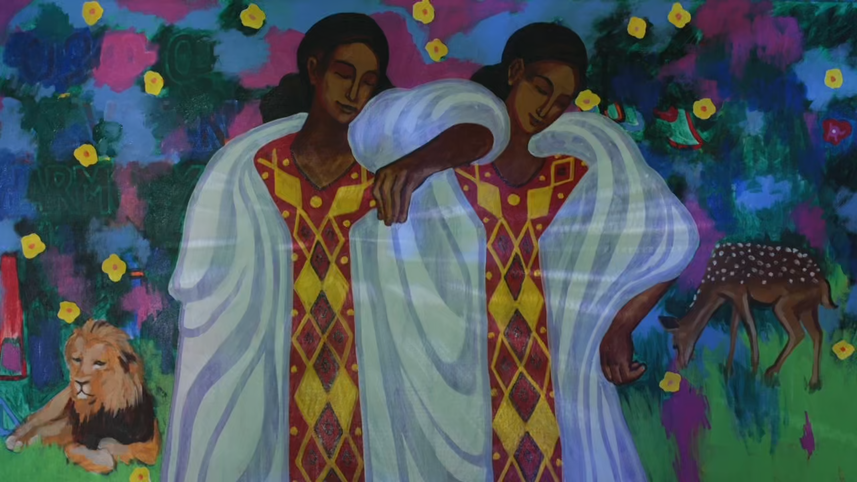
Ezra Wube. Hidirtina (still), 2018
Videobrasil Historical Collection
[ D.B. ] Recently, a video went viral about a guy creating music videos using nothing but AI. What’s your attitude towards artificial intelligence in art?
[ S.F. ] I have several thoughts about artificial intelligence. On one hand, artificial intelligence is a powerful tool that offers new possibilities for artistic expression. The video you’re talking about is an example of how technology can change the creative landscape, giving people without musical or artistic education the opportunity to create.
On the other hand, the use of AI needs to be approached critically, not forgetting the ethical aspects of the question. For example, issues of authorship and originality need to be considered.
While AI can generate impressive works, it is crucial to ensure that it complements human creativity rather than replaces it.
[ D.B. ] In Russia, we see a new trend in user behaviour: people spend hours watching short videos on social networks. I think when talking about video as a medium, it’s important to remember the everyday reality that surrounds us everywhere, not just in museums and galleries. Interestingly, due to the popularity of “reels,” “clips,” and “shorts,” the very culture of communication is changing. I see how people stop texting and exchange short videos instead. So I’d like to ask: do you watch “reels” and what’s your attitude towards this phenomenon? Can it be viewed as a marker of time that might also need to be archived, preserved, and organised?
[ S.F. ] I have to work with short videos on social networks, as they’ve become an integral part of modern media consumption. While using short videos instead of text can lead to a more engaging and dynamic way of sharing experiences and ideas, it also raises concerns about the depth of communication and the potential for superficial connections.
Nevertheless, I can’t help but acknowledge that short videos should be considered as evidence of a unique period in our culture, characterised by an ultra-fast pace of life. Just as we archive significant works of art, the fragments of our daily lives shared through these videos should also be considered for preservation. They encapsulate a unique period in our culture, characterized by rapid consumption and fleeting moments of connection. And while many “reels” might seem trivial, when viewed together, they transform into a complex mosaic portraying contemporary humans.
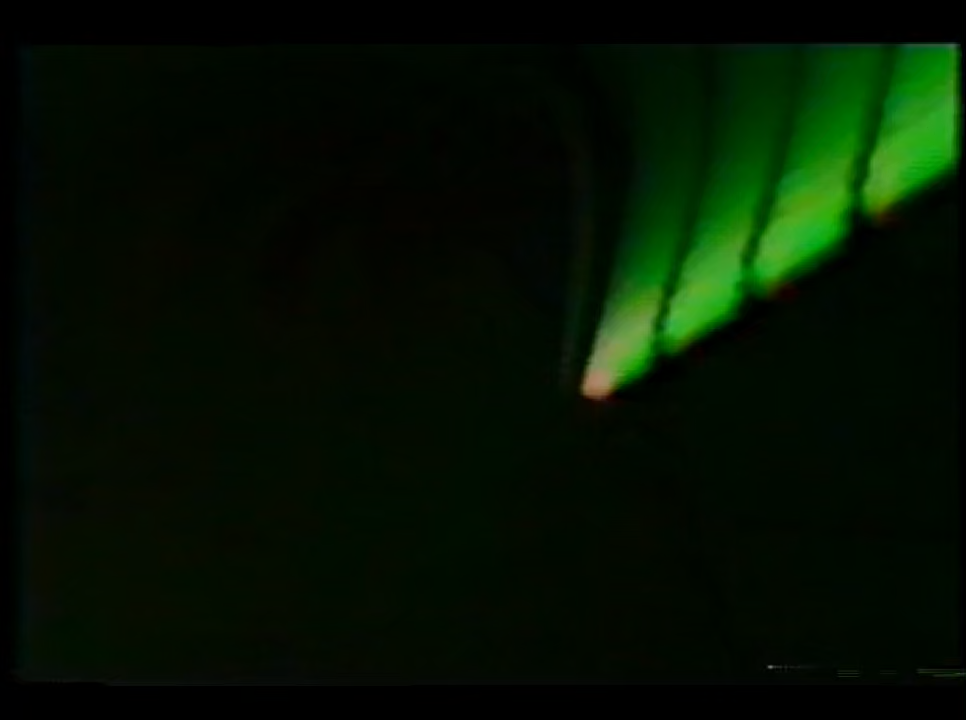
Marina Abs. Grafiti efêmero (still), 1986
Videobrasil Historical Collection